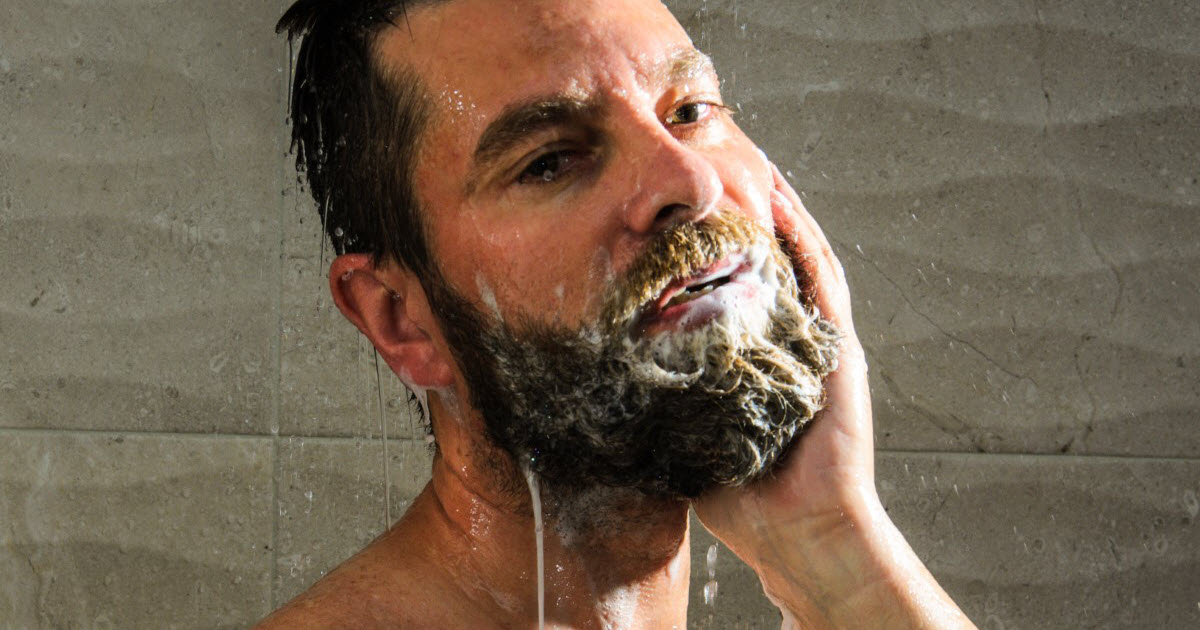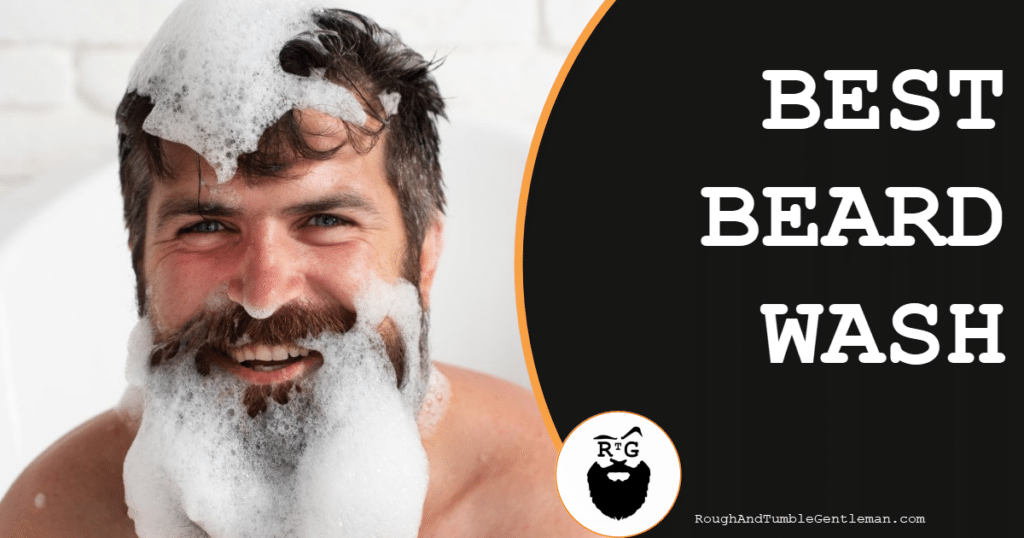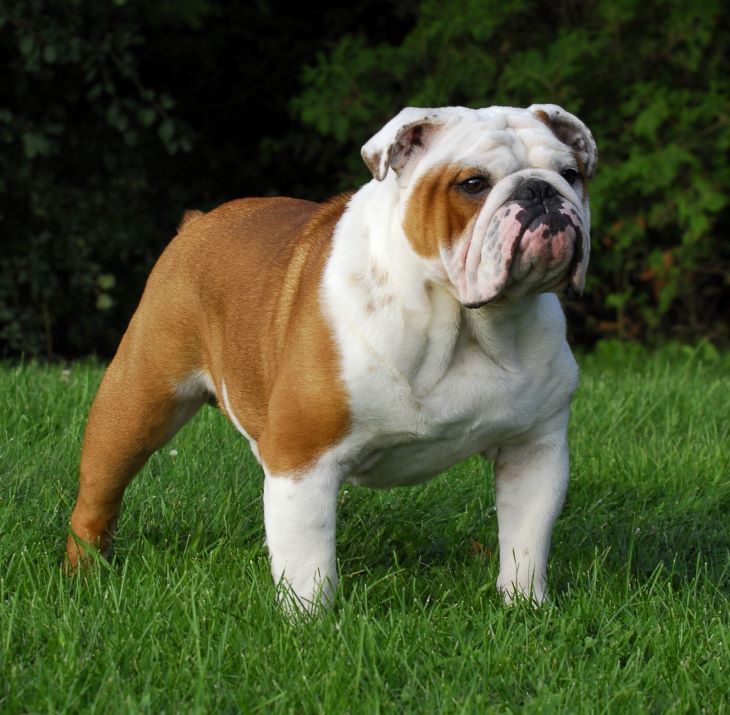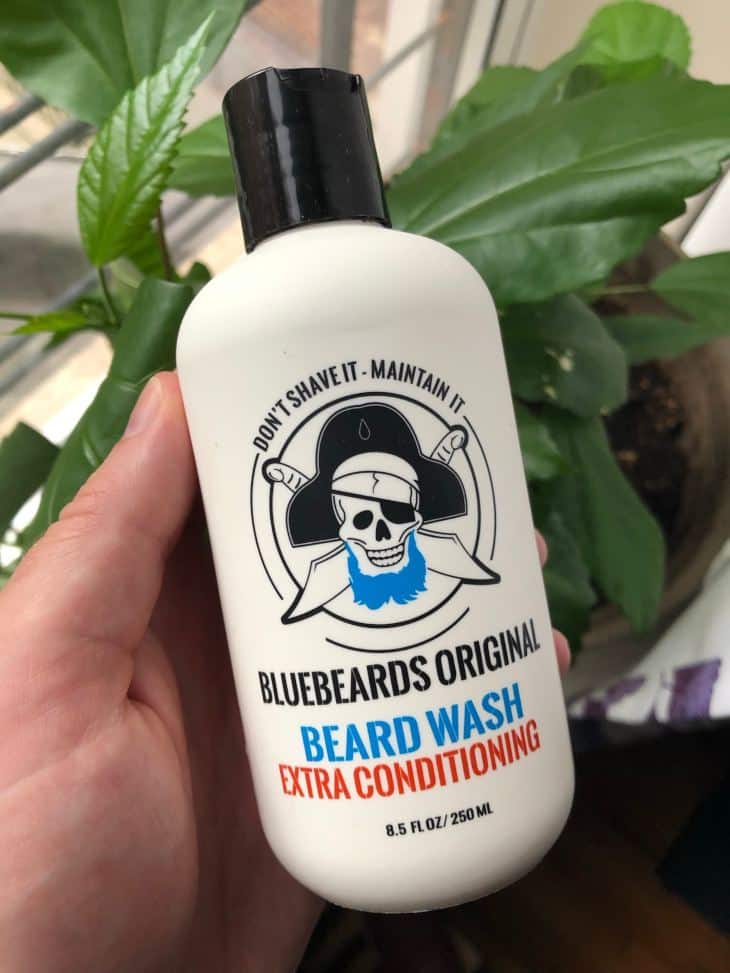A clean beard is a healthy beard! You’re going to need to give all that facial hair you’ve got some TLC, otherwise it’ll end up a tangled mess.
Unfortunately, that soap or shampoo you’ve got lying around won’t cut it. Your beard grows out of your face, not your scalp—and the skin under your beard can’t handle those harsh shampoo ingredients.
Thankfully, you can make a DIY beard wash designed specifically to keep your beard clean. We’ve designed three different beard soap recipes to get you started, and if you find that you’ve got a knack for this kind of thing, we included some more tips and ingredient suggestions, in case you’d like to customize your beard shampoo and make it totally unique. You can change the scent, the oils, or cleansing agents, to formulate a recipe that’s totally your own.
Let’s start with the recipes:

Three Beard Wash Recipes for Every Beard
Each one of these beard wash recipes is unique, to suit every kind of beard and every level of DIY experience. You can keep it simple with our basic recipe, go all-natural with our shikakai beard wash, or try your hand at something a little more professional with our extra-gentle recipe. Despite the big differences, all of these recipes are vegan—no need to smear animal products all over your face if you don’t have to.
Easy Beard Wash for Beginners
This simple and easy recipe is the perfect DIY beard shampoo for beginners. You can put the entire thing together in minutes, with no need for complicated equipment. This wash suds up just enough to help you feel clean, but it also includes ingredients that’ll protect your skin and keep your beard moisturized.
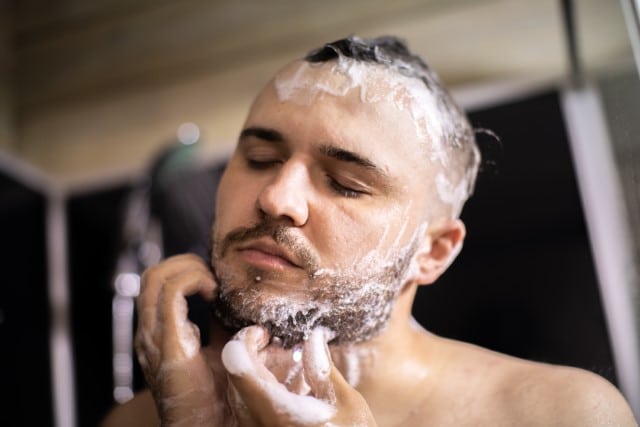
For those incredible suds, the recipe includes castile soap. If you’re not familiar, castile soap is a very concentrated vegetable-derived soap that offers a thorough clean. On its own, it’s a little too intense for the beard, but by diluting it with water and oil, we end up with a fairly gentle recipe.
You can follow this recipe to a T, or you can use it as a base and make your own alterations.
Ingredients:
1 ounce of castile soap
0.5 ounce of jojoba oil
4 ounces of distilled water
5-10 drops of essential oil
Instructions:
Step 1: Combine the Ingredients. Use a funnel to pour the water, castile soap, jojoba oil, and essential oil into a pump bottle.
Step 2: Shake It Up. Give the bottle a good shake to get all of the ingredients to combine.
Step 3: That’s It, Actually. That’s right! This is the easiest recipe we’ve ever developed. You can go ahead and use your beard wash right away (and remember: you should wash your beard 2 to 3 times per week. Just note that this formula is quite thin, so be careful when dispensing, and lather the wash in your hands before using it on your beard. And, of course, make sure you rinse thoroughly to get it all out.
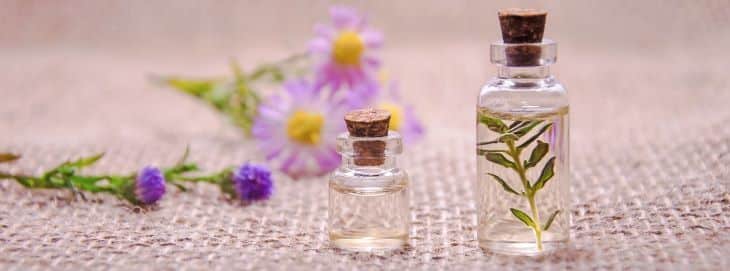
All-Natural and Vegan Beard Shampoo with Shikakai
If you’re committed to keeping your beard care as natural as possible, you can try this vegan beard shampoo with shikakai.
Shikakai is the more well-known name for the Senegalia rugata plant. This plant is a shrub that yields seed-filled pods that contain a lot of foam-forming molecules called saponins. The seeds have been used in Ayurveda (traditional Indian medicine) for centuries as a natural shampoo, often in combination with other plant powders.
Shikakai is similar to soap nuts, but we find that it can be gentler which is why we prefer it for facial hair. This recipe is very easy, so you can make it fresh before every shower, in which case, feel free to add a bit of jojoba or argan oil to make it more conditioning.
If you’re making a batch to use over the course of a week or so, leave the oil out, since combining oil with water can breed bacteria.
Ingredients:
0.5 ounce of shikakai powder
2 ounces of boiling hot water
5-10 drops of essential oil
Instructions:
Step 1: Mix the Water and Powder. Put the shikakai powder in a cup or bowl, and slowly pour in the hot water while mixing. Add enough water to achieve a paste-like consistency that’ll be easy to rub into your beard.
Step 2: Let It Cool. Next, wait for the shikakai and water mixture to cool down. Once it’s not too hot, add a few drops of your favorite essential oil.
Step 3: Use or Store. You can put the mixture in an airtight container and store in the fridge, or use it right away. To use it, massage it into your beard. Leave it in for a few minutes, and then rinse it clean. We find that it’s easiest to use in the shower.
Extra-Gentle Homemade Beard Wash
We’ve designed this DIY beard wash recipe with sensitive skin and brittle beards in mind. To keep things gentle, we unfortunately also have to make things a little more complex. This isn’t a beard soap recipe, technically—it’s a beard cleanser. What’s the difference?
Real soap, like castile soap, is made of saponified oils that have a pH between 8 and 9, which makes them alkaline. They are powerful cleansers, but unfortunately, their alkalinity can be a little irritating to sensitive skin.
This gentle beard cleanser is made with vegetable-derived cleansing agents with a much lower pH, so it won’t throw the skin’s acid mantle off balance. Since we also added hydrating glycerin, this formula can easily breed germs and bacteria… that’s why there’s also a preservative. Unfortunately, it’s a must-have, or else this beard wash will expire within days.
This recipe is fragrance-free, since those with sensitive skin are a little more likely to react to scents, including those from natural essential oils. It may smell a little odd, but avoiding irritation is worth it. Feel free to add your favorite essential oil if you can handle a fragrance!
Ingredients:
0.5 ounce of capryl glucoside
0.5 ounce of cocamidopropyl betaine
0.75 ounce of vegetable glycerin
0.8 grams of Liquid Germall Plus (preservative)
3.75 ounces of distilled water
Instructions:
Step 1: Mix Your Base. While the ingredients are unusual, the process of making this beard wash is pretty easy. To start, put the capryl glucoside, cocamidopropyl betaine, glycerin, and preservative in a bowl or measuring cup. Use a small spatula or stirring stick to mix them together until they’re well incorporated.
Step 2: Add the Water. Next, add the water to your mixture. Make sure to pour it in very slowly, while mixing gently. Otherwise, the formula will start creating a lot of foam, which will make it impossible to store.
Step 3: Place in Bottle. Once the mixture is well-combined, your beard wash will be finished. Pour it gently into a pump or foaming bottle, and it’ll be ready to use!

DIY Beard Shampoo Benefits
If you’re reading this guide, you probably already have a pretty good idea of why you want to make beard wash. If you’re still not sure, here are the benefits of DIY beard shampoo.
It’s Better for Your Budget. Buying groceries and making a meal is usually cheaper than eating at a restaurant. The same applies to beard wash—buying ingredients and making your own beard shampoo will usually be more budget-friendly than buying a commercial product.
You Know What’s Inside. Commercial beard care products are filled with long, strange-sounding chemicals, and certain ingredients, like “fragrance”, can also hide harmful synthetics like phthalates. When you make your own beard wash, you decide what goes in, and you can avoid using any chemicals you don’t want touching your skin or beard hair. You can also customize your beard wash based on other preferences you have for scent or texture.
You’re Broadening Your Horizons. The process of learning how to make beard wash teaches you a lot about formulation and chemistry. As far as grooming DIYs go, the steps of making beard wash are very easy (you don’t have to heat anything!), but the ingredients and chemistry behind it are complex and fascinating. Smart!
How to Store Your Homemade Beard Wash
The way you store your beard wash has a surprisingly huge impact on how pleasant it’ll be to use. Since most of our recipes are quite liquidy, a simple jar won’t do. Instead, a pump bottle will help prevent a mess, and make it easier to use your beard shampoo.
In particular, we suggest using a bottle with a foaming pump, since it’ll turn your creation into a foam that’ll spread through your beard even more easily.

Customizing Your Beard Shampoo Recipe
We’ve designed three very different DIY beard shampoo recipes, but each one can be customized in different ways. So how can you make a beard wash that fits your needs precisely?
Consider the Cleansing Agents
For a beard shampoo to actually cleanse your beard it has to include cleansing agents, which are also known as surfactants. Surfactants are unique ingredients that can mix both with water and oil, which is how they’re able to bind to oil-based grime or product residue and then rinse it away.
You’ll find surfactants in almost every cleansing product, from dish soap to baby wash. Not all surfactants are appropriate for the face or beard, so here are the ones we recommend using:
Liquid Castile Soap is probably the easiest choice. It’s a type of very concentrated soap that’s made out of saponified vegetable oils. You’ll only need a small amount of it to make a nice-sized batch of beard wash. It’s vegan and natural, but like many other soaps, it may be a little drying on its own. It’s a fine choice if your skin is quite resilient and tends to do well with soap-based beard washes, and it’s a very budget-friendly option if you only wash your beard a few times a week. However, if you have sensitive skin or you wash your beard every day, there might be some better options.
Shikakai, as we touched on in our all-natural beard wash recipe, is a seed that’s naturally very rich in chemicals called saponins that are able to lather up and clean away impurities. Shikakai needs to sit on the beard for a little longer than traditional cleansing agents, but as you leave it on your beard, it may help to also soften and condition it a little (at least according to Ayurvedic sources). Research shows it may also help kill malassezia, which is the fungus thought to be responsible for dandruff. However, it’s not a true surfactant, so you may find that it doesn’t lather enough for your taste.
Capryl Glucoside may sound a little intimidating, but this cleansing ingredient is actually derived from vegetable fatty acids and glucose. It’s considered one of the most gentle surfactants because its pH is quite close to the pH of the skin. The low pH is also better for beard hair because it prevents frizz and hair breakage. We still recommend combining it with other surfactants, though, since the way they combine actually results in a more gentle formula.
Cocamidopropyl Betaine is one of the most popular cleansing agents in gentle or natural formulas. It’s a cleansing agent derived from coconuts, and it’s very mild with a low pH. It can work reasonably well on its own, but it’s even better in combination with other surfactants like capryl glucoside.
African Black Soap is a cool alternative to castile in a basic beard soap recipe. African black soap is made from a combination of different plant ingredients and oils like shea butter, coconut oil, palm oil, and plantain bark, which are then saponified with cocoa pod ash.
It’s considered more moisturizing than traditional soap, so if you use it you might be able to cut down on the amount of oil you use. It’s also been found to have some antimicrobial effects, which may help with various skin issues. You can buy liquid black soap, but if you have a bar, melt it in hot water first before adding it to your recipe.
Soap Nuts are similar to shikakai, and for many, they might be easier to find. In fact, it was while researching soap nuts that we discovered shikakaiand decided that we might prefer it for our beards. Like shikakai, soap nuts are also popular in Ayurveda (in India, they’re commonly referred to as Ritha), and they’re sold both as full pods or as a powder. You can use soap nut powder instead of shikakai in our all-natural recipe, but if you have the pods, you’ll need to soak them in hot water for a few hours, and then either blend them or just use the water.
We think that shikakai is a little more gentle and softening for the beard, while soap nuts can be a little more drying, but it’s not a big difference and both can work well. It’s also very common to use both.
Change the Scent
When you use your homemade beard wash, you want it to smell nice. It’s as simple as that! Essential oils are our go-to’s for scenting our products because they’re sourced from plants and it only takes a few drops to make your beard wash smell great.
Unlike a beard oil or balm, a wash won’t leave much of a scent behind on your beard, so you don’t need to worry too much about matching the essential oils to the fragrance of your beard balm or cologne.
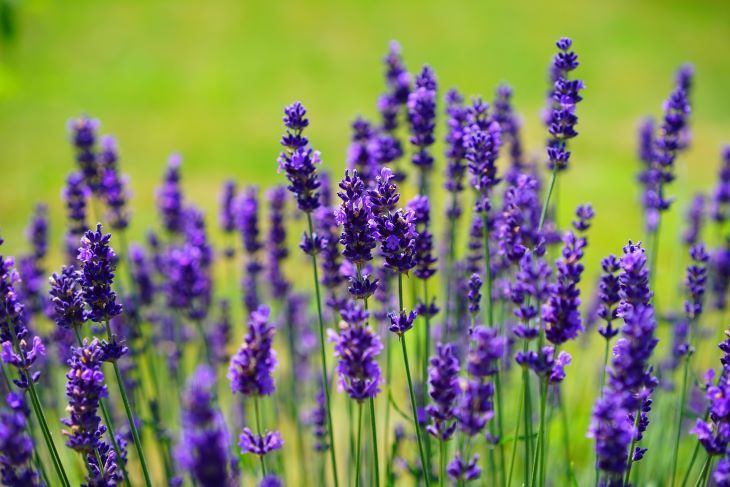
Here are some of our favorite single essential oils, for when you want to keep your beard wash recipe simple:
Cedarwood essential oil is our favorite and the one we usually use here at Rough and Tumble. It’s a woodsy scent but we don’t think it’s overpowering, which is why we like it even on its own.
Lemongrass is another nice choice, with a citrusy yet herbal scent with a touch of spiciness.
Lavender is a calming, floral scent with some green notes to it, which is why we consider it unisex. If you wash your beard at night, you might find that it puts you in the right mindset for going to sleep.
Peppermint is a cooling and bracing essential oil that naturally contains menthol. It’s commonly used in aftershaves, for that cooling touch, but you might also like it in your beard wash.
Frankincense is a slightly spicy woodsy essential oil, with a lot of warmth. Depending on the variety, it can also be a little smoky.
Bergamot is our favorite one-note citrus. It’s not as sweet as orange essential oil but it’s also more complex than lemon, with a lot of freshness.
You can also blend a few essential oils together to achieve a truly custom scent. Here are some mixes that we think work well:
Brace Yourself: Peppermint, fir, ginger, and bergamot essential oils.
Citrus Blend: Bergamot, lime, and orange essential oils.
Worldly Woods: Cedarwood, frankincense, and myrrh essential oils.
Herbal Blend: Rosemary, thyme, basil, and coriander essential oils.
Sweet Smoke: Vanilla, sandalwood, lavender, and cedarwood essential oils.
You Can Go Fragrance-Free. You’ve probably noticed that our gentle beard wash recipe didn’t include any essential oils. That’s because those with very sensitive skin sometimes find that they react to fragrances, regardless of whether their origin is natural or synthetic. If you have issues with fragrances, feel free to leave them out, and if you don’t, go ahead and add your favorite essential oil to our gentle recipe.
Homemade Beard Wash Add-Ons
Here are a few other ingredients you may want to add to your beard wash, either to make it more nourishing or to improve its overall performance.
Oils. Oils are important for making beard wash formula a little less drying and stripping. They’re considered emollients, so they can fit into gaps between skin or hair cells, to help protect, moisturize, and soften them. Some of our favorite oils include coconut oil, jojoba oil, argan oil, grape seed oil, and even olive oil.
Normally, we would talk at length about the different properties of different oils, but the truth is that in a beard shampoo that you wash off, they don’t really matter. They help to mitigate the potential damage from the cleansing ingredients, but you rinse them off pretty quickly so they don’t have to do much else.
Hydrating agents. Ingredients like glycerin, hydrolyzed proteins, and honey are called humectants. They can offer direct hydration to the skin, and they’ll prevent your beard wash from dehydrating your beard. They work by absorbing water from around them (including from the atmosphere), so once they’re on your skin, they’ll help to moisturize your beard and face, especially in conjunction with oils. Most of our recipes don’t include them because they’ll shorten the formula’s shelf life, but if you add a preservative, you can include them in any beard wash you make.
Preservatives. Preservatives are controversial in DIY grooming products, with some sources and organizations believing that many of them are toxic or dangerous. The Cosmetic Ingredient Review (the body that advises the FDA on ingredient safety) is a great resource for learning about the safety of specific preservatives.
In general, any DIY product that’s made with water will have a very short shelf life, since microbes breed very easily in water—especially once you add other ingredients. If you want your beard wash to last longer, you’ll have to add a preservative to it.
We used Liquid Germall Plusin our gentle beard wash because it’s a comprehensive preservative that works well at just 0.5% concentration. You can add this preservative to any other beard wash recipe.
Optiphen Plus is another preservative that may work well with water-based formulas. Most other commercially-available preservatives only act against specific microbes, so you would have to combine them to get broad-spectrum effects.
Thickeners. To keep things beginner-friendly, we decided to leave thickeners out of all of our beard wash recipes. As a result, they’re almost all a little liquidy, which is why it’s important to store them in a pump bottle. However, if you would like a thicker texture, as though you’re using a commercial beard shampoo, you can add a natural, plant-derived thickener to your wash, like xanthan gum or guar gum.
DIY Beard Wash Shelf Life
Depending on which recipe you’ve decided to make, another thing to keep in mind is expiry. A formula with a preservative can sit outside for weeks or even months, but our basic recipe will only last 3-5 days at room temperature, or a week or two in the fridge. The all-natural shikakai beard wash has to be kept in the fridge, unless you plan to use it right away.
Clean Beard Your Way
Beard wash is one of our favorite things to make. No matter which ingredients you choose, it’s just a matter of mixing a few different things in a cup or bottle. Before you know it, you’ll have made a product you can use right away, for a cleaner beard.
So what’s your plan? Will you stick to the basics with castile soap, experiment with natural plant seed powders, or become a real chemist with gentle surfactants?
Look at you! You’re like a chemist now. Good luck, have fun, and happy beard!
Michael Morris is the head writer here at Rough and Tumble Gentleman. He's got a ducktail beard and loves Brazilian jiu-jitsu. He's married to the woman of his dreams and lives in Brooklyn, NY.

